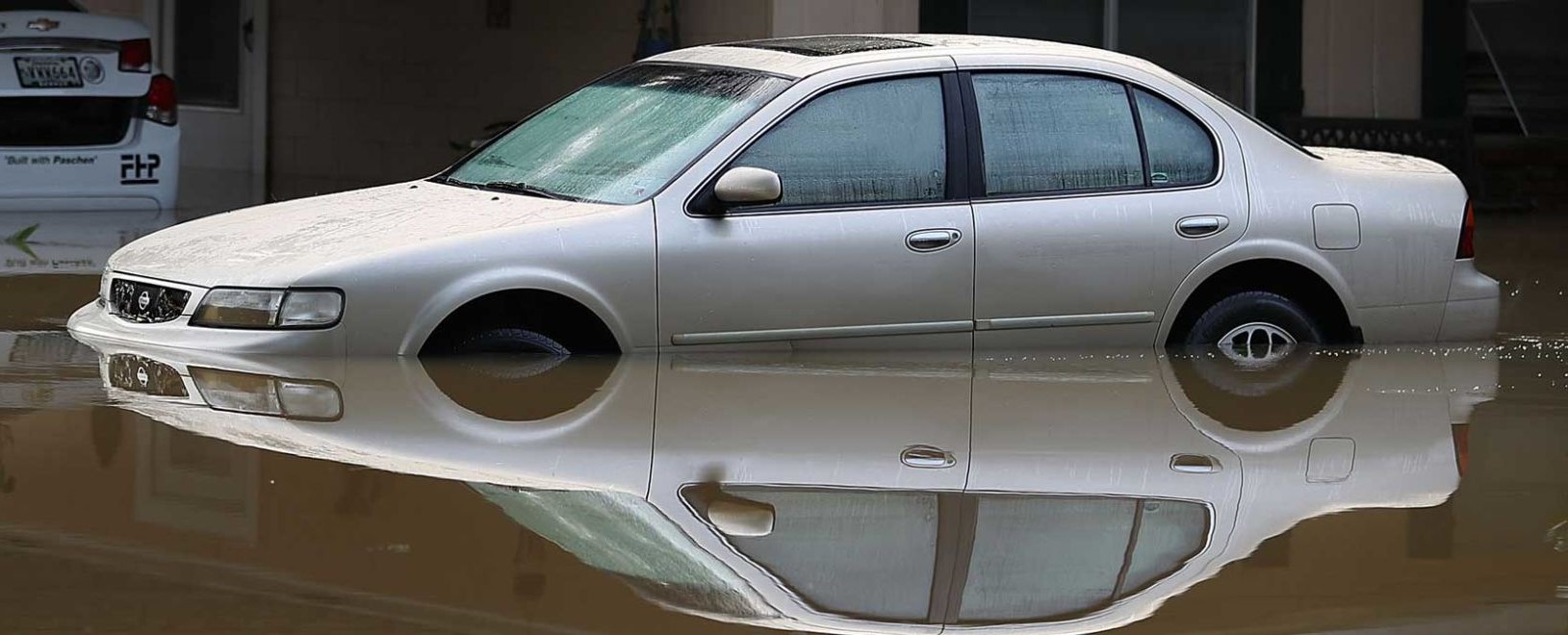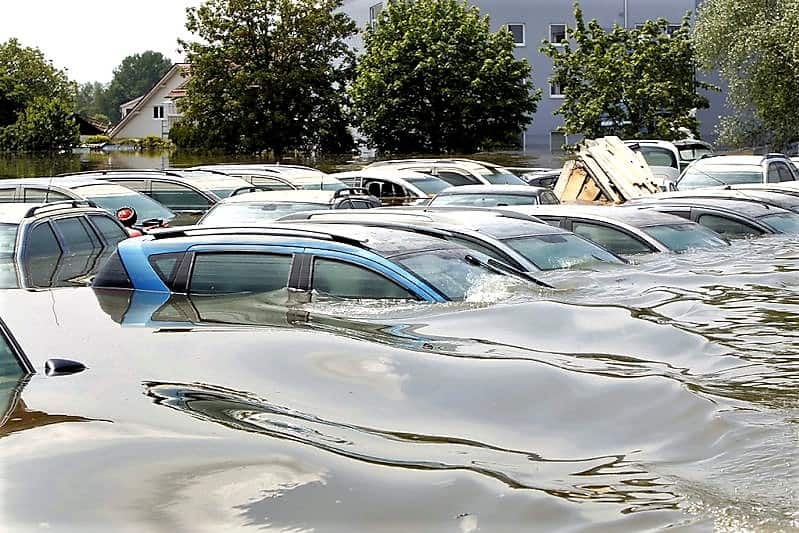Here we go again. Along with the horrendous damage, flooding and the tragic loss of life caused by the two major hurricanes that recently hit the Southeast comes the aftershock of dishonesty and greed.
Of the hundreds of thousands of vehicles that were submerged and essentially ruined by the flood water, an unknown but significant number eventually will re-emerge on used car lots and in classified ads to be offered as undamaged used cars by unscrupulous sellers.
The situation extends to collector vehicles that have been flooded, which means a buyer’s dream classic can turn out to be a nightmare.

Flood-damaged vehicles might look like clean used cars after they’ve been tidied up for resale, and they could seem OK during test drives as the hidden damage can take time to appear. Electronic faults, engine and transmission failures, and uncontrollable rust are common maladies that can plague a vehicle that’s been under water, and such problems can take time to appear.
“The long-term effects of water damage can haunt buyers for the life of the car,” Consumer Reports says in a report about flood vehicles.
Many buyers won’t ever know that they were purposefully ripped off, only that the cars or trucks they bought at reasonable prices turned out to be hopeless lemons, and often money pits. They can be dangerous, too, as water can damage steering and brake systems, with potential failures, and rust can cause the chassis and subframes to literally fall apart.

The situation is very much buyer beware as the legal precautions are fairly porous. Insurance claims will result in flood-damaged vehicles being declared totaled, with salvage notations added to their titles so that they can never be sold legally as undamaged. But the titles can be transferred from state to state to make the salvage brands disappear.
And vehicles that were not claimed for insurance compensation, primarily the many without comprehensive insurance, never get any title brands and can be simply passed off as normal used cars to unsuspecting buyers.
“Vehicles that were not insured may be cleaned up and put up for sale by the owner or an unscrupulous dealer with no disclosure of the flood damage,” according to the National Crime Insurance Bureau.
Yes, it’s an easy racket in which thousands of people get cheated. Flood-damaged vehicles can appear anywhere, often transported from flooded areas to places where water damage would not be expected.
A potential buyer should always be ready to check for signs a vehicle has been under water. Here are some ways to detect whether a vehicle has been in a flood:
• First, the smell test. Sit in the car with the doors and windows closed for a minute and take a good sniff, which could reveal the scent of moisture or mold. Also look and smell for any air freshener or cleaning agents that could be masking the musty odor.
• Look for obvious signs of dirty water being present in the interior, such as stains on rugs and upholstery or silt under the seats, behind the dashboard and other hidden places. Brand-new rugs or upholstery can be telltale signs of deception. Pull seatbelts all the way out to check for signs of moisture.
• While you’re inside the car, try out everything – lights, horn, gauges, power windows and locks, the audio system (speakers are wrecked by water) and anything else within reach.
• Examine under the hood for signs of water. Use a flashlight to check behind mechanical parts and in crevasses for signs of silt or debris accumulation. Do the same in the hidden areas of the trunk – lift any mats and look under the spare tire.
• Check any exposed metal parts, such as screw heads, for unusual signs of rust as well as under doors, body sills and wheel wells. Once a car has been under water, it can rust unseen from the inside out. If there is any rust accumulation in places not normally exposed to moisture, the vehicle has most likely been flooded.
• Look for droplets of condensation inside headlights and taillights, dashboard gauges and interior lights. Also look for any water lines inside lenses and gauges.
• By all means, have the vehicle inspected by a reputable mechanic who can do a more-thorough examination for signs of flood damage or any other potential problems. If the seller refuses to allow an independent inspection, walk away.
No amount of examination is absolutely foolproof, so ask the seller plenty of questions and listen carefully for evasive or questionable answers. Use your instincts to detect signs that everything about this vehicle might not be on the up and up, even if it seems great on the surface.
Most of all, don’t fall in love at first sight or you could find yourself being an easy mark for a dishonest seller.
You, the buyer, should be in control because there are plenty of used cars, even desirable classics, from which to choose. And be ready to say thanks, but no thanks. Especially at the first whiff of a flood-damaged vehicle.






the old saying will never be out of date "BUYER BEWARE"
The insurance companies are as much at fault by allowing the vehicles to be transported to states where they can than be sold as clean title cars. It is not just dealers who bear the brunt of the blame here.
Unfortunately there is NO law against buying a salvage car and transporting it to another state and get a new title there that is NOT a salvage title. The LAW has to be changed at the federal level. State to state things differ. Thus the Scam becomes legit. Wrong but legit.
And don’t think just because your buying from a large chain dealer. Ie.. ford, kia, chevrolet, volvo, mercedes that your safe. The large chains don’t care about reputation and are the biggest crooks out there!
The dealership may have picked it up auction after the state to state "title washing", therefore, unknowingly selling you a flood car. Typically, new car dealerships will only have it if it was traded in by someone being less than honest